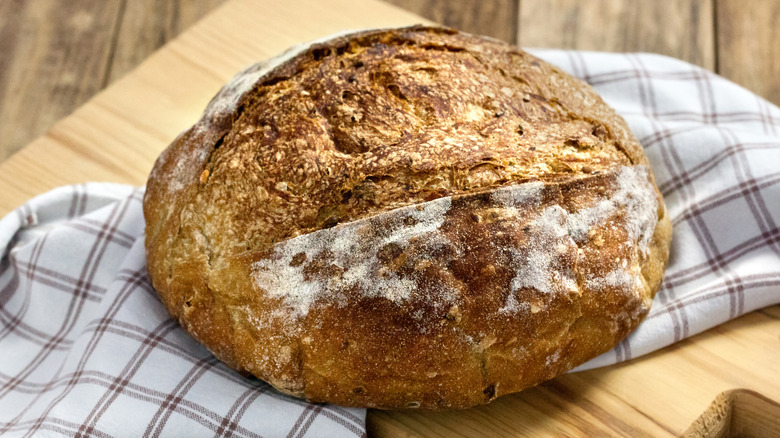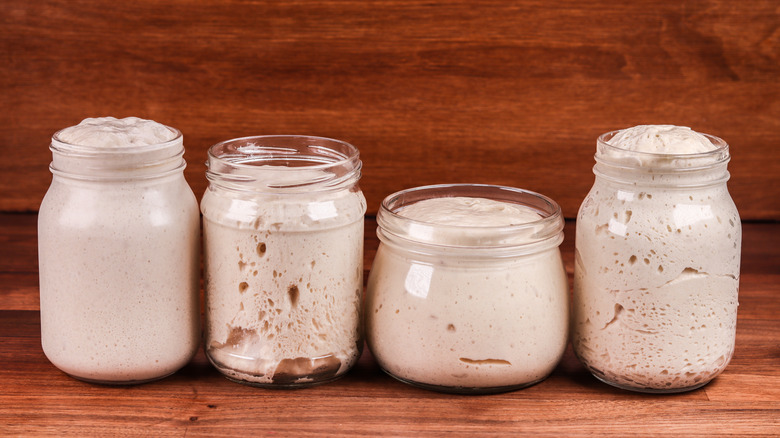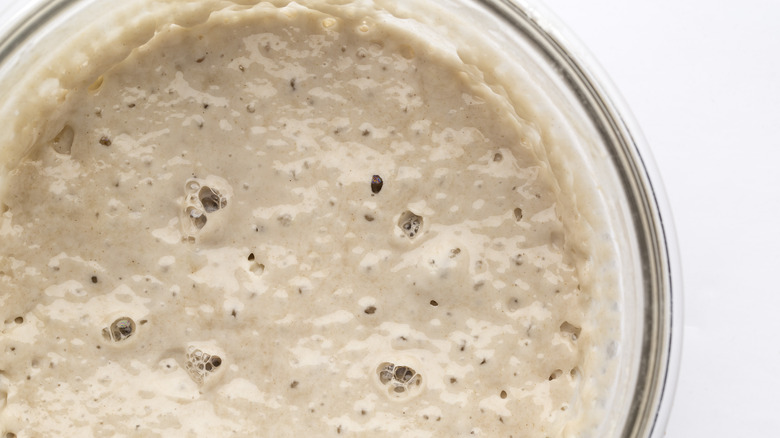Why Prefermenting Homemade Bread Is Worth The Effort
Over the past few years, more of us have added bread-makers to our cooking resume. Still, after a couple of years of baking, bread-making can be confusing and fickle as many factors, like temperature, humidity, and ingredients, affect the end result. Like other forms of baking, success with a recipe one day does not guarantee another crusty loaf of bread in the future, but there are techniques to increase your chances.
"Prefermenting" is an added, two-step process bread-makers use to slow down fermentation, which strengthens the structure of the dough, adds flavor to the bread, keeps the finished loaf fresh longer, and reduces the bulk fermentation time the next day. Depending on which country your recipe originated, a preferment (known by many names — levain, sponge, mother, biga, poolish, and sourdough starter) is bread dough made several hours to a day before the final baking process.
Varied by recipe, preferments can be runny or stiff, made with commercial or naturally cultured wild yeast, and contain salt or not. The step isn't time-consuming but requires preplanning, and the results are worth the effort.
How to make a preferment
Although you can make bread from scratch in a couple of hours, that loaf will never taste as good as one given more time to ferment, which is why some sourdough starters have been kept for centuries. The added time, whether it's given at the end of the recipe with a straight dough or done earlier in the process with prefermenting, allows the dough more time to develop alcohol and bacteria, which leads to an airy, flavorful dough.
This process is used for all types of dough, including pizza dough, and can be adapted for existing recipes. The ratio of flour to water and whether or not you include commercial yeast depends on the recipe and your environment.
Poolish (pronounced "pool-eesh") is generally a craggy preferment consisting of equal parts water and flour, while the Italian version, biga, is stiffer, combining two parts flour to one part water. Both use commercial yeast, but bakers will adjust the amount based on the kitchen's temperature and humidity. In colder environments, a greater amount of yeast is necessary.
Sourdough starters or levain do not use commercial yeast but rely on a naturally developed wild yeast culture. The preferment could be an active portion of the starter added to the final dough or mixed with additional flour and water. Preferments are covered with plastic wrap and kept warm for up to 24 hours to do their magic.
How do you know when the preferment is ready?
Regardless of the type of preferment the recipe calls for, it should show signs that it's active before adding it to the dough. While you can compensate with additional yeast to make the dough rise, the bread won't have the texture and taste expected if the preferment hasn't ripened. Moreover, the dough will be less acidic, resulting in a shorter freshness period.
If the preferment is ready, the surface will have little bubbles, and it should have grown in size, although a loose poolish will rise less than a biga. A familiar smell to sourdough bakers, a preferment should have a yeasty, sour smell; if you taste it, the dough should be tangy and a bit sweet.
To ensure it's ready, you can perform a float test. Drop a piece of the preferment in a bowl of warm water. If it floats, it's ready. If it sinks, wait 30 minutes and try again. If the preferment is still dense, check its temperature (ideally around 72 degrees Fahrenheit), give it more time to ripen, or if using a levain, check if it's still alive.



